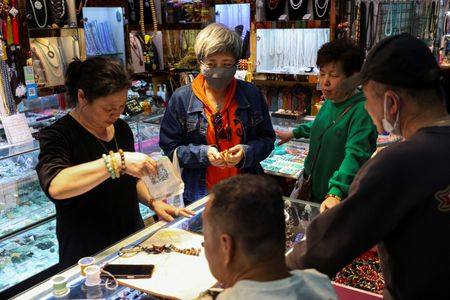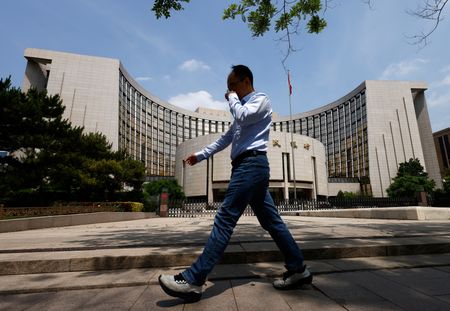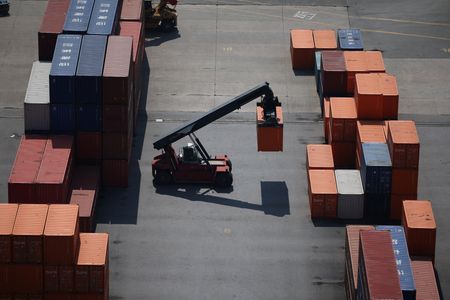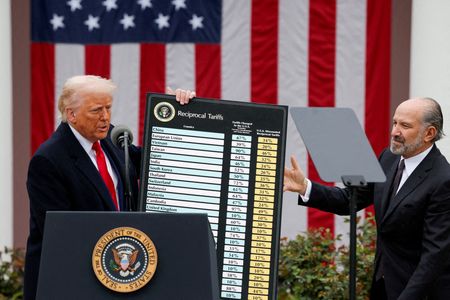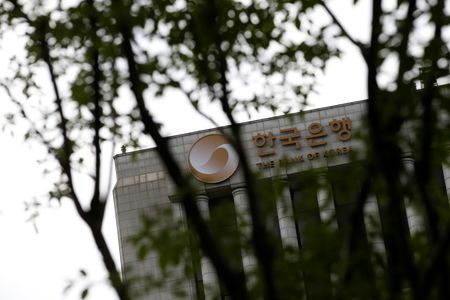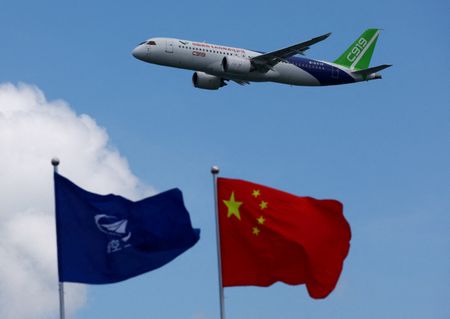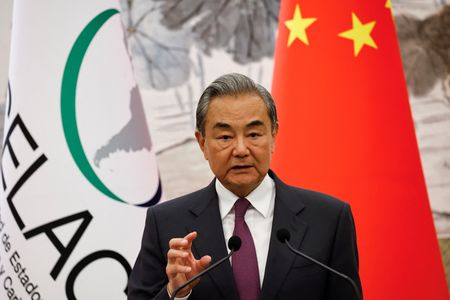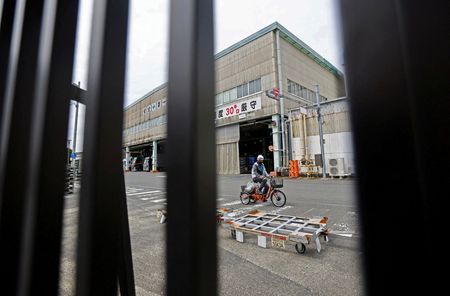BEIJING/SINGAPORE (Reuters) -After Chinese banks reduced deposit rates last week, Miro Chen launched a social media poll: “When interest rates fall, do you save or spend?”
More than 80% of some 5,000 responses chose saving, underlining the challenge for policymakers seeking to shore up demand and economic growth.
“The result is one-sided, indicating people are very worried,” said the 37-year-old, who works for an internet company in southern China. “I am not sure how long my company can survive,” he added, explaining why he also saves.
China’s central bank eased monetary policy last week to limit damage from the trade war with Washington. On Friday, it lowered the ceiling for deposit rates to offset margin pressure on banks and prompt savers to spend or invest more.
But successive cuts to deposit rates in recent years have failed to curb explosive growth in Chinese household savings, intensifying concerns over the side-effects that lower returns have on the country’s consumers, who tend to build their own safety net.
At the end of March, total household deposits surpassed 160 trillion yuan ($22.30 trillion), up 10.3% from a year before, and equivalent to 118% of last year’s gross domestic product (GDP), official data show. Retail sales, by comparison, rose 4.6% year-on-year in the first quarter.
Minxiong Liao, senior economist at GlobalData.TS Lombard APAC, says lower interest rates “likely reduce income growth” for China’s population.
“People, especially those born in the 1980s, may need to save more rather than spend in the coming decade to secure retirement cashflow, as low interest rates are likely to persist.”
Chinese households have been saving more due to worries over job security in a stuttering economy facing deflationary pressures, as well as wealth concerns caused by a prolonged property crisis.
Liao and other economists say the best policies to increase consumption in China would be bolstering its pension system and other social benefits to curb households’ savings needs.
Since losing his marketing job a year ago, 30-year-old Lawrence Pan, now a freelancer, no longer pays his social insurance contributions, although he could if he chose to.
He prefers to save money on his own as he doesn’t trust the state system, which the Chinese Academy of Sciences sees running out of money by 2035.
Pan saves about two-thirds of his income into his current account. He says fixed-term savings offer too little interest for him to bother with deposits.
“I feel my savings and spending habits would be more balanced if deposit rates were higher. A higher interest rate signals that the economy is getting better,” said Pan. “In such a scenario, I would spend more.”
‘PAINKILLERS’
China has repeatedly pledged to make household consumption – which is about 20 percentage points of GDP below the global average – a more important driver of economic growth.
The world’s second-largest economy relied heavily on exports last year to hit its roughly 5% expansion target and analysts say higher U.S. tariffs call for greater urgency on measures that rebalance the economy towards domestic demand.
But lower interest rates may work against that aim.
Michael Pettis, senior fellow at Carnegie China, says they facilitate a transfer of resources from the net savers in the economy – mainly households in China’s case – to the net borrowers, which are the business and government sectors.
“In a financial system like that of China today, and also of Japan in the 1990s, lower real interest rates don’t seem to boost consumption,” Pettis said.
Also like in Japan, which has grappled with decades of economic stagnation, the side effects on borrowers are growing as well.
Elisabeth Werenskiold, senior economist at Fathom Consulting, says monetary policy easing in China makes many businesses dependent on low borrowing costs in the long run, leading to the “zombification” of entire industries.
She says cash flow in sectors such as construction, airlines, travel and computer services covers less than five months of interest expenses, describing anything below five as the “danger zone”.
“It’s a bit like painkillers,” Werenskiold said. “You can treat the pain, but unless you treat the source you’ll have to keep taking the painkillers, increasing the risk of negative side effects.”
Thrifty households can also force cost-cutting measures throughout the economy, risking a deflationary spiral.
Book editor Erin Yao, 32, moved last year from Beijing to cheaper Wuhan in central China to save more of her income. Her company’s strategy shift to lower-cost books makes her worry about the economy, so she plans to put money aside for rainy days even if deposit rates drop to zero.
“My first reaction to the deposit rate cut was: has the economy entered a downturn?” Yao said.
“I won’t spend all my money to enjoy life now. I will keep something aside in case my parents or I become ill,” she said.
($1 = 7.1747 Chinese yuan renminbi)
(Reporting by Ellen Zhang and Liangping Gao in Beijing and Claire Fu in Singapore; Graphics by Kripa Jayaram; Editing by Marius Zaharia and Shri Navaratnam)

